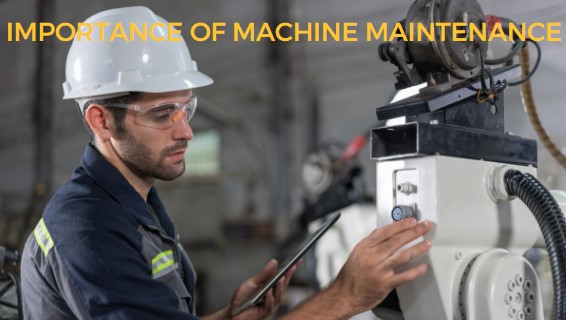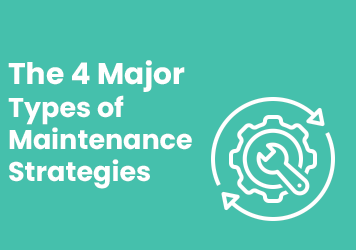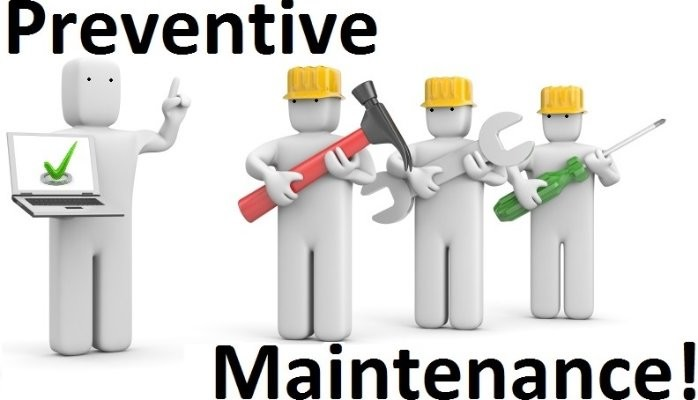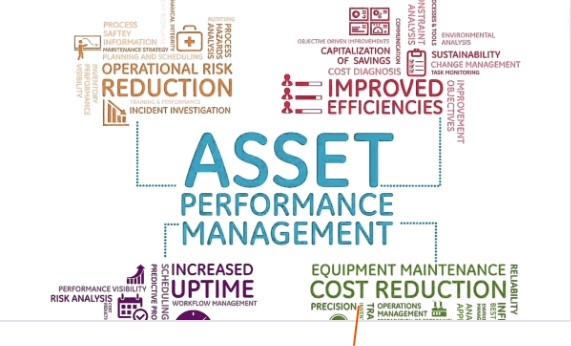
Machine Maintenance and its importance
Pratik Lohiya |
18 Jan 2024 |
07:56 AM
- Understanding the Basics of Machine Maintenance
- The Role of Machinery Maintenance in Various Industries
- Industries and Machine Maintenance plan
- Machinery Maintenance in Plastics Product Manufacturing
- Ensuring Efficiency in Automotive Manufacturing
- Key Maintenance Practices in Refineries
- The Importance of Machinery Maintenance in Apparel Production
- Steel Mills: Machine Maintenance for Durability
- Enhancing Productivity in the Food Production Sector
- Optimizing Machine Maintenance
- Introduction to Computerized Maintenance Management Systems (CMMS)
- Scaling Up: Using CMMS for Large-Scale Machine Maintenance
- Strategies for Effective Machine Maintenance
- Understanding the Importance of Machine Maintenance
- Making Machine Maintenance Work for You
- Conclusion

The 4 Major Types of Maintenance Strategies
Madhurima Sanyal 24 Jun 2024 | 11:54 AMLearn about the four major types of maintenance strategies: reactive, preventive, predictive, and reliability-centered maintenance. Understand their benefits, implementation, and how to choose the right strategy for your organization....
Machine maintenance is the backbone of operational efficiency across various industries. To truly grasp its significance, it's essential to delve into the fundamentals and understand its pivotal role in different sectors.
Understanding the Basics of Machine Maintenance
Machine maintenance encompasses a series of proactive measures aimed at preserving the functionality and longevity of equipment. From routine checks to addressing wear and tear, these practices are vital to prevent costly downtime and ensure smooth operations.
The Role of Machinery Maintenance in Various Industries
Industries such as plastics product manufacturing, automotive manufacturing, refineries, apparel production, steel mills, and food production heavily rely on proper maintenance of machines. This is not just about keeping machines running; it's about sustaining production levels, meeting safety standards, and avoiding expensive repairs.
As machinery mechanics, maintenance technicians, and millwrights play crucial roles in these processes, it becomes evident that a skilled workforce is essential for maintaining the intricate balance of modern industrial operations.
In plastics product manufacturing, for instance, a well-executed maintenance plan ensures that production lines run smoothly, minimizing the risk of equipment failure and subsequent costly repairs. Automotive manufacturing demands precision, and preventive maintenance is the key to sustaining this precision, reducing the chances of unexpected breakdowns.
Refineries, as complex systems, require a meticulous approach to maintenance to ensure safety and prevent disastrous outcomes. Apparel production, steel mills, and food production similarly rely on well-maintained machinery for efficiency, safety, and product quality.
This section provides a snapshot of why machine maintenance is not just a task but a strategic necessity. As we delve deeper, we'll explore specific industries and how they tailor maintenance strategies to their unique needs.
Industries and Machine Maintenance plan
In the complex landscape of industrial production, the role of machine maintenance is indispensable. Let's explore how various industries leverage meticulous machinery maintenance plans to ensure efficiency, productivity, and reduce machine downtime.
Machinery Maintenance in Plastics Product Manufacturing
Regular checks and preventive measures not only prevent equipment failure but also contribute to the overall safety of the manufacturing process. This section delves into the specific practices that ensure the seamless functioning of machinery, reducing the risk of costly machine downtime and enhancing the safety of the workforce.
Ensuring Efficiency in Automotive Manufacturing
From routine inspections to preventive maintenance strategies, this subsection details how the automotive industry keeps its machinery in top-notch condition. By understanding the importance of timely interventions, automotive manufacturers ensure a steady flow of production without compromising on quality.
Key Maintenance Practices in Refineries
Refineries operate in an environment where precision and safety are paramount. From condition-based maintenance to preventative maintenance strategies, refineries prioritize equipment maintenance to prevent emergency repairs and uphold the integrity of their intricate systems.
The Importance of Machinery Maintenance in Apparel Production
In apparel production, where precision and quality are non-negotiable, equipment maintenance is the guardian of these standards. This part of the article explores how the industry navigates through routine checks and preventive measures to sustain the efficiency of their machinery. By doing so, they ensure that the production lines remain uninterrupted, workplace injuries are prevented and consumer demands are met without compromising on product quality.
Steel Mills: Machine Maintenance for Durability
Steel mills, known for their heavy equipment operation that rely on robust machine maintenance plans to uphold durability. From addressing wear and tear to predictive maintenance, the steel industry demonstrates how meticulous machine maintenance is the key to sustaining operations in this demanding sector.
Enhancing Productivity in the Food Production Sector
In food production, where hygiene and quality are paramount, heavy equipment maintenance is the cornerstone of productivity. From routine checks to proactive measures, the sector showcases how a well-executed machine maintenance plan directly translates to enhanced productivity, reduced workplace accidents and higher operating life of machine.
Optimizing Machine Maintenance

Introduction to Computerized Maintenance Management Systems (CMMS)
At the core of modern machine maintenance practices lies the sophisticated technology of Computerized Maintenance Management Systems (CMMS). CMMS is more than just a software solution; it's a game-changer that streamlines the entire maintenance process. This subsection delves into the fundamental aspects of CMMS, outlining its functionalities and highlighting how it enhances the efficiency of machine maintenance tasks.
CMMS acts as a centralized hub, consolidating accurate data on equipment maintenance, scheduling, and performance. It empowers maintenance teams with real-time information, facilitating better decision-making and reducing the likelihood of unexpected breakdowns. This introduction aims to demystify CMMS, making it accessible to both seasoned professionals and those new to the concept.
Scaling Up: Using CMMS for Large-Scale Machine Maintenance
As industries expand and machinery fleets grow, the need for scalable machine maintenance solutions becomes paramount. This subsection explores how organizations scale up their machine maintenance efforts using CMMS. By providing step-by-step guidance, it outlines the process of implementing CMMS for large-scale operations.

The adoption of CMMS enables seamless communication among maintenance teams, ensuring that everyone is on the same page. This section discusses the practical benefits of CMMS, such as improved resource allocation, enhanced preventive maintenance planning, and streamlined workflows. By leveraging CMMS, organizations can efficiently manage the maintenance of a vast array of machinery, reducing downtime and optimizing operational efficiency.

Through a blend of storytelling and data-driven insights, this section illustrates how organizations have witnessed a transformative shift in their maintenance strategies with the integration of CMMS. By addressing the practical aspects of its implementation and emphasizing its impact on efficiency, this subsection aims to inspire readers to consider CMMS as a pivotal tool in their machine maintenance arsenal.
Strategies for Effective Machine Maintenance
Preventive Maintenance Strategies
Preventive maintenance is a proactive maintenance strategy aimed at averting potential equipment failures and disruptions by regularly servicing and inspecting machinery before issues arise. This systematic approach involves scheduled tasks, such as routine inspections, lubrication, and component replacements, to keep equipment in optimal condition. By adhering to a predetermined maintenance schedule, organizations can address wear and tear, identify and rectify minor issues, and ensure that equipment operates efficiently.

Predictive Maintenance
Predictive maintenance is a proactive strategy that utilizes advanced data analytics, machine learning, and sensor technologies to predict when equipment or machinery is likely to fail. By continuously monitoring and analyzing real-time data from sensors, organizations can detect subtle changes or anomalies in equipment conditions, allowing them to forecast potential issues before they result in downtime or failure. Ultimately, it enhances operational efficiency, reduces maintenance costs, and extends the lifespan of assets by addressing problems before they escalate, offering a significant advantage over traditional reactive maintenance practices.

Reactive and Corrective Maintenance
Reactive or corrective maintenance is a type of maintenance strategy where repairs and interventions are performed in response to equipment failures or breakdowns. In reactive maintenance approach, maintenance activities are initiated after a failure has occurred, often resulting in unplanned downtime and potentially higher repair costs.
Reactive maintenance involves the identification and correction of faults or defects in equipment. Reactive maintenance is typically characterized by addressing issues as they arise rather than proactively preventing them.

Understanding the Importance of Machine Maintenance
Ensuring Longevity: How Maintenance Prolongs Equipment Life
Maintenance plays a pivotal role in ensuring the longevity of equipment by addressing wear and tear, preventing failures, and optimizing performance throughout its operational lifespan. Regular maintenance, such as preventive and predictive strategies, contributes significantly to equipment reliability. Preventive maintenance involves scheduled inspections, lubrication, and replacements to mitigate potential issues before they escalate, while predictive maintenance leverages data analytics and sensors to forecast and address problems proactively.
Maintenance activities also help identify and rectify minor issues before they evolve into major faults, thus minimizing the risk of unexpected breakdowns. Lubrication, calibration, and cleaning procedures are essential aspects of maintenance that promote efficient operation and reduce the stress on components.

Additionally, a well-executed and right maintenance strategy ensures that equipment operates within specified parameters, prevents premature wear and extending its overall life. This involves monitoring key performance indicators, such as temperature, pressure, and vibration, to detect deviations from normal operating conditions.
Mitigating Risks: Machine Maintenance as a Safety Measure
Safety is paramount in any industrial setting. Regular maintenance activities are essential for identifying and addressing potential hazards associated with machinery. Preventive maintenance, involving routine inspections and equipment checks, helps identify wear and tear, loose components, or other issues that could lead to malfunctions or failures.

Predictive maintenance, utilizing advanced technologies like sensors and data analytics, further enhances safety measures. It allows for the early detection of anomalies or signs of impending failures, enabling timely interventions to prevent accidents. This approach minimizes the chances of unexpected breakdowns, which could pose safety risks to operators and other personnel working in the vicinity of the machinery.
Making Machine Maintenance Work for You
Incorporating Regular Checks and Routine Maintenance Tasks
Incorporating regular checks and regular maintenance tasks is a fundamental aspect of ensuring the optimal performance, longevity, and safety of equipment. These proactive measures involve systematic inspections, adjustments, and upkeep to identify and address potential issues before they escalate. Regular checks typically encompass visual inspections, lubrication, and calibration of equipment to maintain it within specified operating parameters.

Scheduled maintenance tasks, such as replacing worn-out components, tightening loose connections, and cleaning vital parts, contribute to the prevention of malfunctions and breakdowns. These activities not only extend the lifespan of equipment but also help in avoiding emergency repairs and downtime associated with unexpected failures of heavy equipment.
Incorporating advanced technologies, such as IoT sensors and data analytics, into routine maintenance enhances the effectiveness of these tasks. Real-time monitoring allows for more accurate assessments of equipment health, enabling timely interventions and basic maintenance tasks.

Leveraging Data for Proactive Decision-Making
Incorporating regular checks and routine maintenance tasks is a fundamental aspect of ensuring the optimal performance, longevity, and safety of equipment. These proactive measures involve systematic inspections, adjustments, and upkeep to identify and address potential issues before they escalate. Regular checks typically encompass visual inspections, lubrication, and calibration of equipment to maintain it within specified operating parameters.
Periodic inspections help identify and rectify potential safety hazards, ensuring that safety features, emergency shutdown systems, and protective devices are in proper working condition. This is crucial for creating a secure working environment and mitigating the risk of accidents.
Conclusion
Machine or Equipment maintenance not only ensures the longevity of equipment but serves as a safety sentinel. Proactive checks and routine tasks become the foundation for accident prevention, fostering a secure industrial environment. From plastics manufacturing to steel mills, meticulous maintenance practices play a pivotal role in sustaining efficiency, preventing downtime, and upholding safety standards.

The strategies for different types of machine maintenance—preventive, predictive, and reactive—unfold a spectrum of approaches. From averting potential failures to predicting maintenance needs, these strategies, when applied judiciously, reduce downtime, enhance operational efficiency, and extend the lifespan of valuable assets.
The advent of advanced technologies, such as predictive analytics and Computerized Maintenance Management Software (CMMS), has ushered in a new era of proactive decision-making, allowing organizations to anticipate issues, optimize resources, and enhance overall productivity. Regular checks, routine equipment maintenance tasks, and leveraging data for informed decision-making collectively contribute to a holistic approach that improve machine maintenance strategy. As industries continue to evolve, cultivating a culture of proactive machinery maintenance remains paramount for sustained success and resilience.